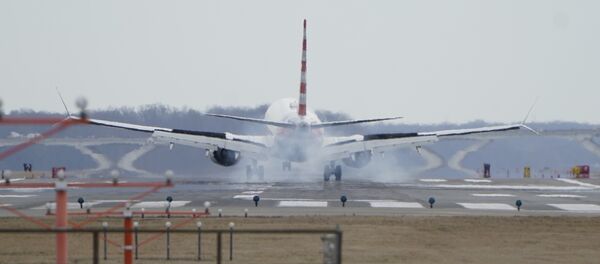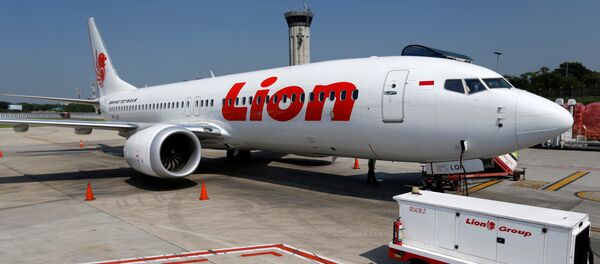On March 10, a Boeing 737 Max 8 plane operated by Ethiopian Airlines crashed soon after taking off from Addis Ababa, Ethiopia, at around 8:30 a.m., killing all 157 people on board. According to Ethiopian Airlines, contact with the plane was lost at 8:44 a.m., just a few minutes after it took off. In October 2018, a Lion Air-operated 737 Max 8 crashed into the Java Sea just minutes after taking off from the Indonesian capital of Jakarta. All 189 passengers onboard were killed.
In both crashes, the plane's new flight control system, the Maneuvering Characteristics Augmentation System (MCAS) has been implicated as a cause. The MCAS, initially designed to be a safety feature, is supposed to evaluate sensor data and push the plane's nose down to keep it from stalling in the event that the nose of the plane is too high.
According to "two people involved in testing in recent days," who spoke anonymously to the New York Times, "under conditions similar to the Lion Air flight, three engagements over just 40 seconds, including pauses, would send the plane into an unrecoverable drive," the report states. In other words, pilots had around 40 seconds to counteract the activation of the planes' MCAS, which can be triggered by mistake.
Under the MCAS' current design, pilots can reverse the pushing of the plane's nose down "via a switch at their thumb," according to the New York Times. By doing so, pilots can extend the 40-second window to avoid a crisis. However, to completely stop the system from being triggered, pilots would have to "shut off the electricity to a motor" that allows the MCAS to "push the plane toward the ground."
Before the Lion Air jet crashed, the pilots attempted to override the MCAS by using the thumb switch more than a dozen times, the New York Times reported. However, the MCAS continued to be triggered due to faulty airspeed sensor readings.
In recent simulations, pilots were able to halt the system and land the jets safely. However, they did so with more detailed knowledge of how the system actually works, which the pilots in the two deadly 737 Max 8 crashes did not have.
According to John Cox, an aviation safety consultant and a former 737 pilot, the thumb switch can increase the 40-second window pilots have to avert a disaster to several minutes. However, that still might not be enough time for crew members unfamiliar with the nuances of the system.
"There is a limited window to solve this problem, and this crew didn't even know that this system existed," Cox told the New York Times.
Boeing has developed new software to fix the suspected glitch believed responsible for the deaths of 346 people. On Monday, the American manufacturer announced that it will provide free software updates to airlines that have purchased the 737 Max 8 jets. In addition, Boeing has started conducting software training for more than 200 airline pilots, technical experts and regulators in Renton, Washington.
The US Department of Transportation also released a statement Monday announcing the "establishment of an expert Special Committee to review the procedures of the Federal Aviation Administration (FAA) for the certification of new aircraft, including the Boeing 737 MAX."
"Safety is the number one priority of the Department, and this review by leading outside experts will help determine if improvements can be made to the FAA aircraft certification process," said Secretary of Transportation Elaine L. Chao, according to the press release.
Days after the the Ethiopian Airlines crash, a number of countries including China, India, Egypt, Vietnam and EU states began blocking the Boeing 737 Max 8 from their airspace. About two weeks ago, after many criticized the FAA for their initial refusal to ground the jets in question, US President Donald Trump also announced that he would ground the planes until Boeing arrived at a solution to the safety issues.



